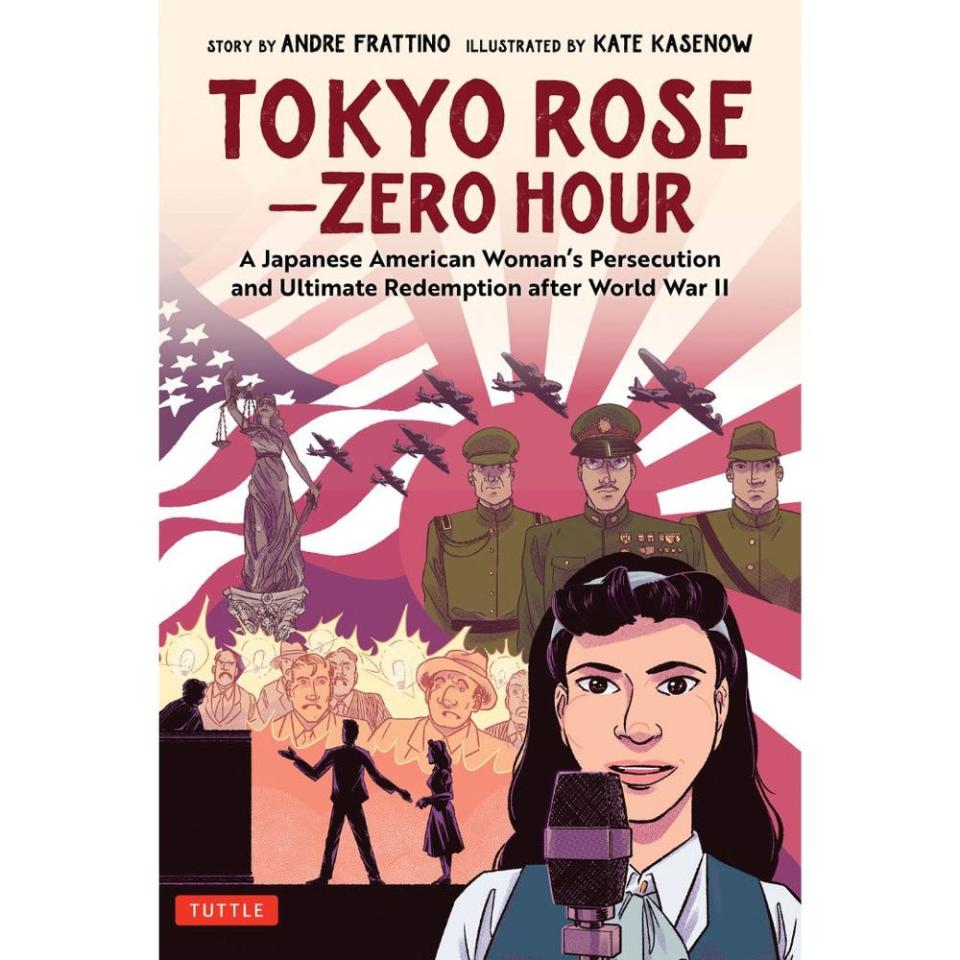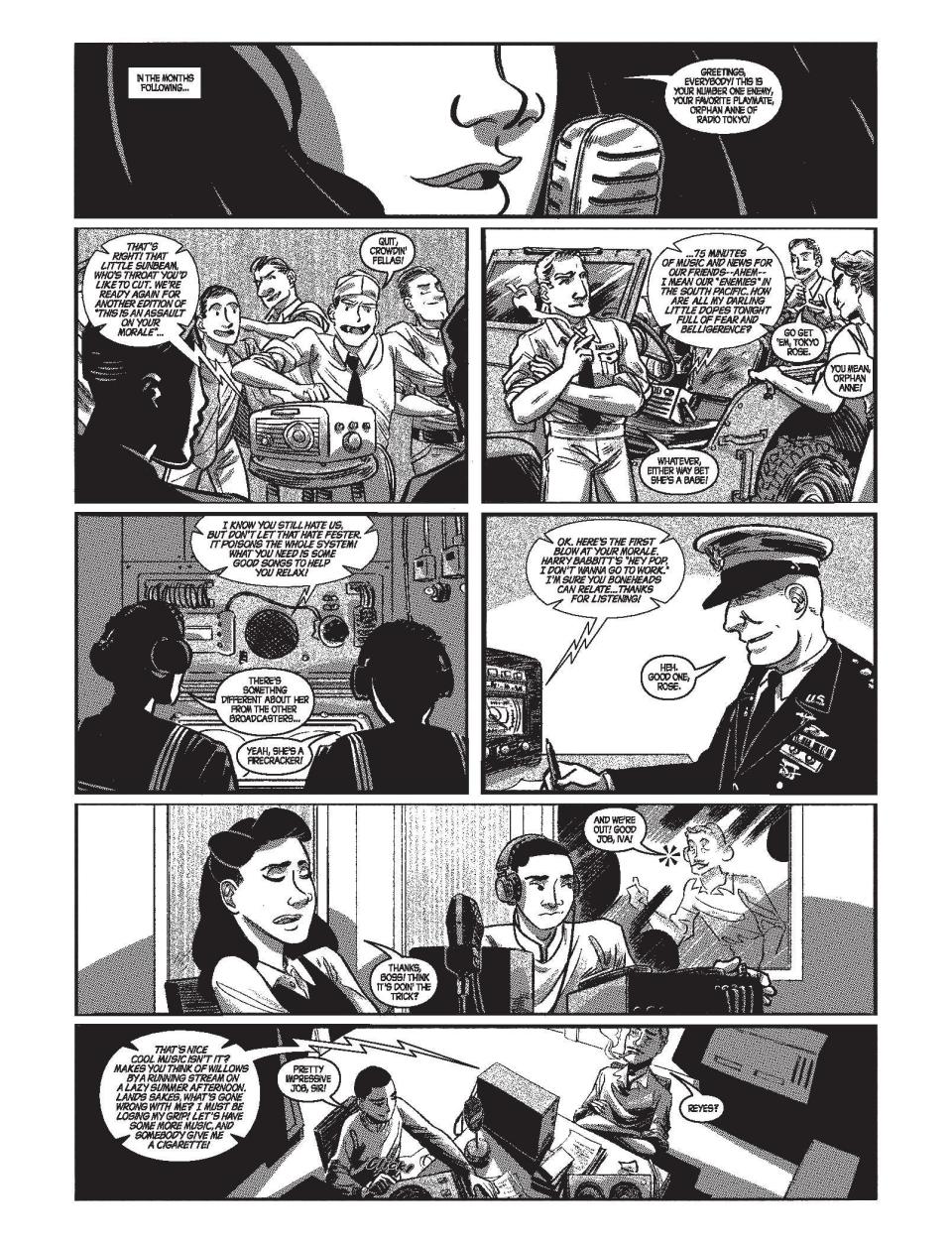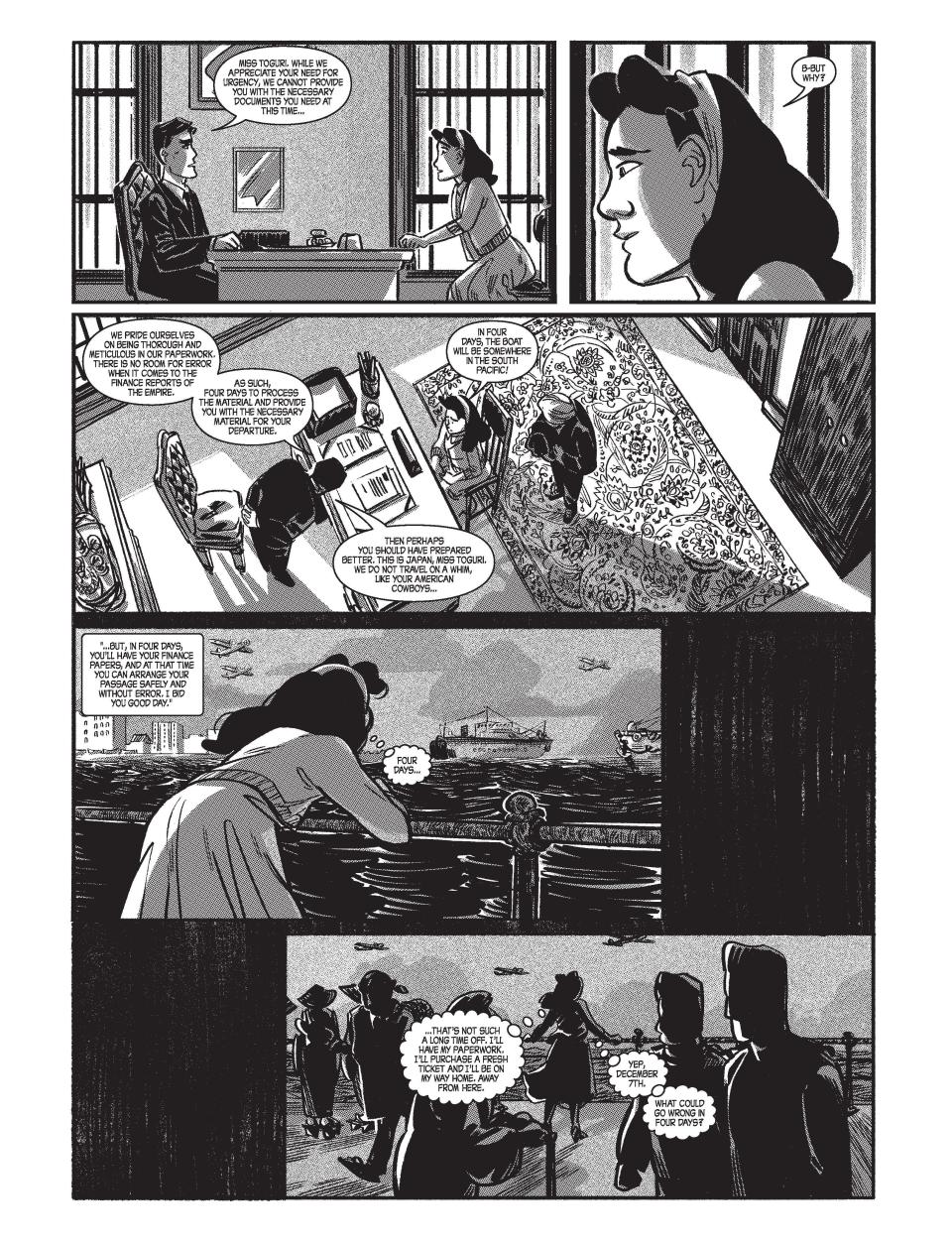'Tokyo Rose – Zero Hour' sheds a light on an untold story in World War II history
We’re taught history in school that gives us snippets of different time periods but rarely does the teacher have time to get into all the details and nuances of those moments of history.
Savannah comic book creator Andre Frattino sheds a light on a piece of World War II history that is often skimmed over in his newest graphic novel “Tokyo Rose – Zero Hour.”
“I’ve focused on history in the past. A lot of my historical graphic novels range from Florida pioneers to Holocaust survivors. One was historical fiction and the other was more of a stretch of history. This is a full-on, to-the-letter documentation that is very much based in fact-finding research.”
On local illustrators: Savannah has become 'beacon in the night' for comic book, sequential artists seeking community
Other new graphic novels: Savannah illustrator Kit Seaton travels into magical realism with new graphic novel, 'Coven'
Also: New comic book 'Nightmare in Savannah' tackles tough themes in a 'love letter to the weirdo kid'
“Tokyo Rose – Zero Hour” follows the true story of a Japanese American woman named Iva Toguri D’Aquino. D’Aquino, referred to in the graphic novel as simply Iva Toguri, was born and raised in California. Shortly before the United States became involved in World War II, she traveled to Japan to visit a relative. After the bombing of Pearl Harbor, she became stuck there and had to find work. That led her to work for Radio Tokyo where she became one of several women commonly known as Tokyo Rose, English-speaking radio presenters used as a propaganda tool.

Andre Frattino said he was always drawn to World War II history because of his grandfather’s involvement. “My grandfather was at Pearl Harbor when it was attacked. He went on to fight as a 1st Division Marine at Okinawa, Iwo Jima, Midway, and then he went on to be an artist afterward.”
Growing up with his grandfather’s stories also meant watching a lot of World War II movies where occasionally you would hear an actress recreating a Tokyo Rose radio broadcast. “In many cases in those movies, that was the only time you heard the enemy.”
More: Mighty Eighth Air Force collection now available online through Digital Library of Georgia
As an adult, Frattino started to reexamine parts of World War II history. “Within U.S. history, we have a certain expectation of what we think all these wars were about and what these wars were like… I think that World War II has so much nuance to it that we aren’t taught in schools.”

“With ‘Tokyo Rose’, you get to see behind the veil of what Japanese life was like, what the expectations were, what they were trying to do in a way that we’re not often told.”
Finding Iva Toguri D’Aquino’s true story proved to be a little challenging. “There was not that much material on Toguri. We had to rely a lot on actually finding independent publications, research papers, actually looking at old documentation from previous war documents, but a lot of it came from having to find the history of Tokyo Rose more than the history of Iva Toguri. In many of those documentations, she was a footnote. She wasn’t the only Tokyo Rose.”
Local sequential artist community: Neighborhood Drink-N-Draw creates space for sequential artists to hone their craft
Frattino was able to track down some books written about D’Aquino’s ordeal during the war and after when she was trying to return to her home. As he started working on “Tokyo Rose – Zero Hour,” he wanted to show who she was as a person, not just a cog in a propaganda machine.
“History kind of glosses over the smaller names, but just because they’re smaller or lesser known doesn’t make them any less important than the big names we’re aware of.”

Frattino said he’s fortunate to have such a good team to help him tell this story. He and illustrator Kate Kasenow had been friends since he moved to Savannah in 2005. The two met in a class at the Savannah College of Art and Design. “I was amazed by her art style. It was so uniquely different from everything else I had seen any of us doing. Kate has her own style that’s very delicate and whimsical and also detailed and grounded.”
“I think that she brings the right amount of delicacy and impactfulness that I think embodies Iva Toguri.”
Column: Young adult literature more than good-looking ‘Twilight’ vampires
Comic book veteran Janice Chiang came onboard as the letterer after intervention from Tuttle Publishing. “The Kickstarter that raised the funds [to pay] Kate didn’t allot me the funds for Janice. It took Tuttle Publishing. They afforded the balance we needed to get Janice on board.”
For Frattino, it was a dream come true. Having Chiang on their team also meant having someone with experience in the fight for Asian American rights. Chiang wrote about her experience as a Chinese American in the foreword of “Tokyo Rose – Zero Hour.”

Even though they were born during different times and faced different issues, Chiang writes that she sees many similarities in their life journeys and hopes this graphic novel will create mutual understanding.
“Tokyo Rose – Zero Hour” was released Tuesday. You can find copies in Savannah’s local bookstores and comic book shops, but you also have a chance to get your copy signed.
Column: Why your summer reading should include cinematic artform of the graphic novel
On Friday, the Book Lady Bookstore will have a free discussion and signing event with Frattino and Kasenow from 7 to 8 p.m.
The next day, Frattino and Kasenow will be at Nerdheim, 106 East Broughton Street, from 3 to 5 p.m. for another meet-and-greet and signing.
This article originally appeared on Savannah Morning News: Artist talks new World War II graphic novel, Tokyo Rose - Zero Hour

